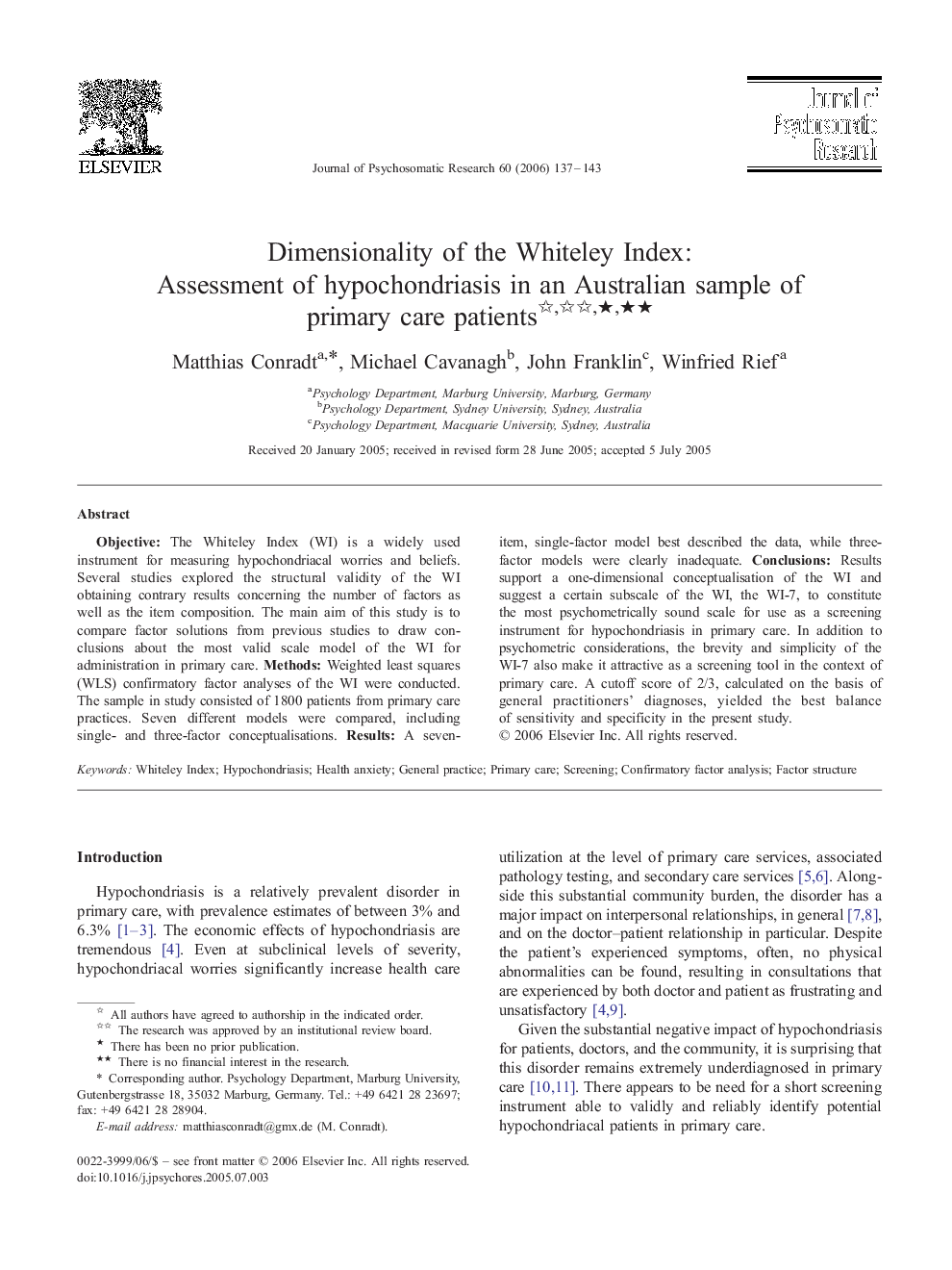| Article ID | Journal | Published Year | Pages | File Type |
|---|---|---|---|---|
| 951053 | Journal of Psychosomatic Research | 2006 | 7 Pages |
ObjectiveThe Whiteley Index (WI) is a widely used instrument for measuring hypochondriacal worries and beliefs. Several studies explored the structural validity of the WI obtaining contrary results concerning the number of factors as well as the item composition. The main aim of this study is to compare factor solutions from previous studies to draw conclusions about the most valid scale model of the WI for administration in primary care.MethodsWeighted least squares (WLS) confirmatory factor analyses of the WI were conducted. The sample in study consisted of 1800 patients from primary care practices. Seven different models were compared, including single- and three-factor conceptualisations.ResultsA seven-item, single-factor model best described the data, while three-factor models were clearly inadequate.ConclusionsResults support a one-dimensional conceptualisation of the WI and suggest a certain subscale of the WI, the WI-7, to constitute the most psychometrically sound scale for use as a screening instrument for hypochondriasis in primary care. In addition to psychometric considerations, the brevity and simplicity of the WI-7 also make it attractive as a screening tool in the context of primary care. A cutoff score of 2/3, calculated on the basis of general practitioners' diagnoses, yielded the best balance of sensitivity and specificity in the present study.
